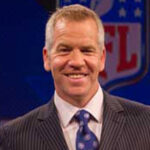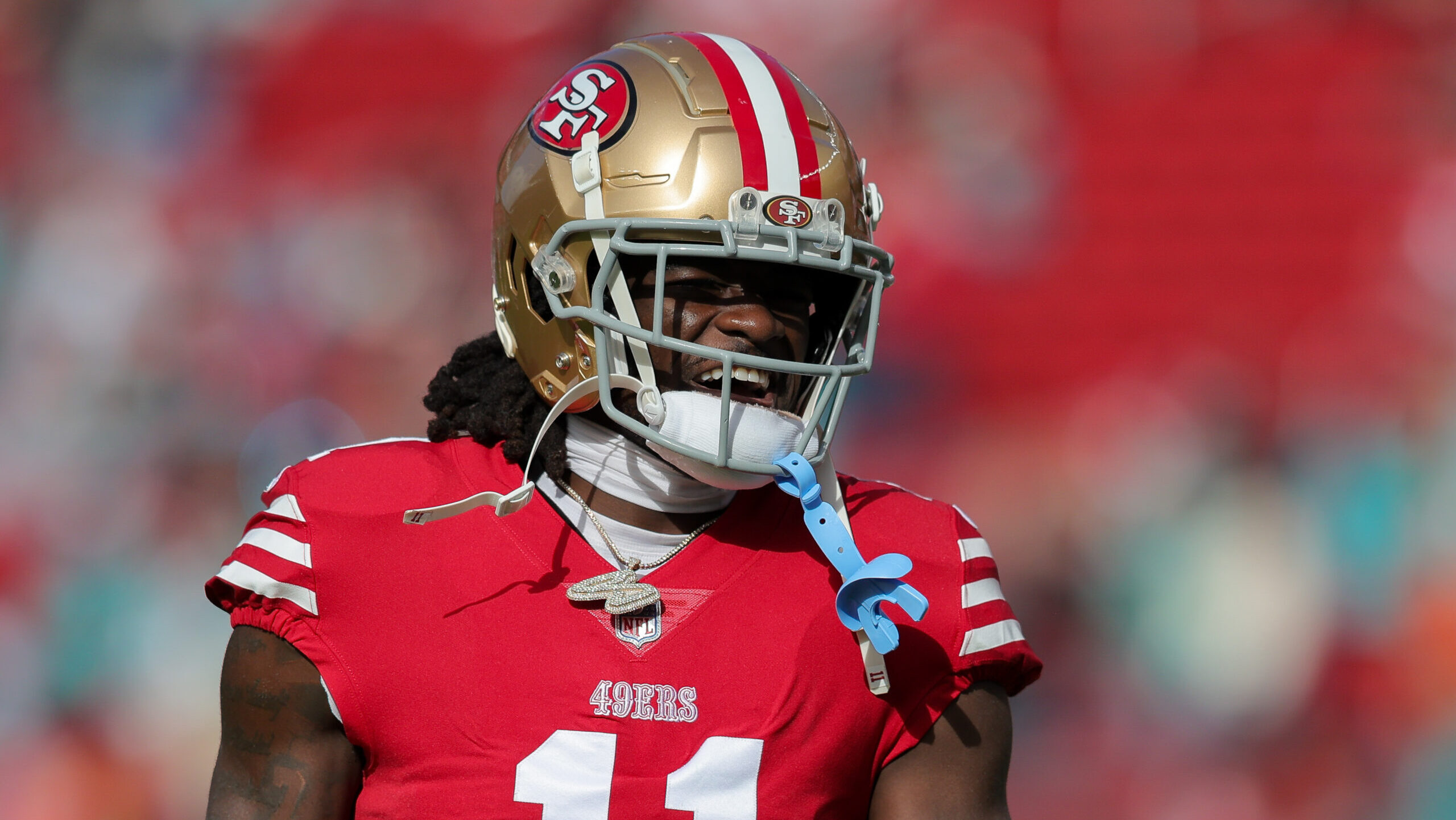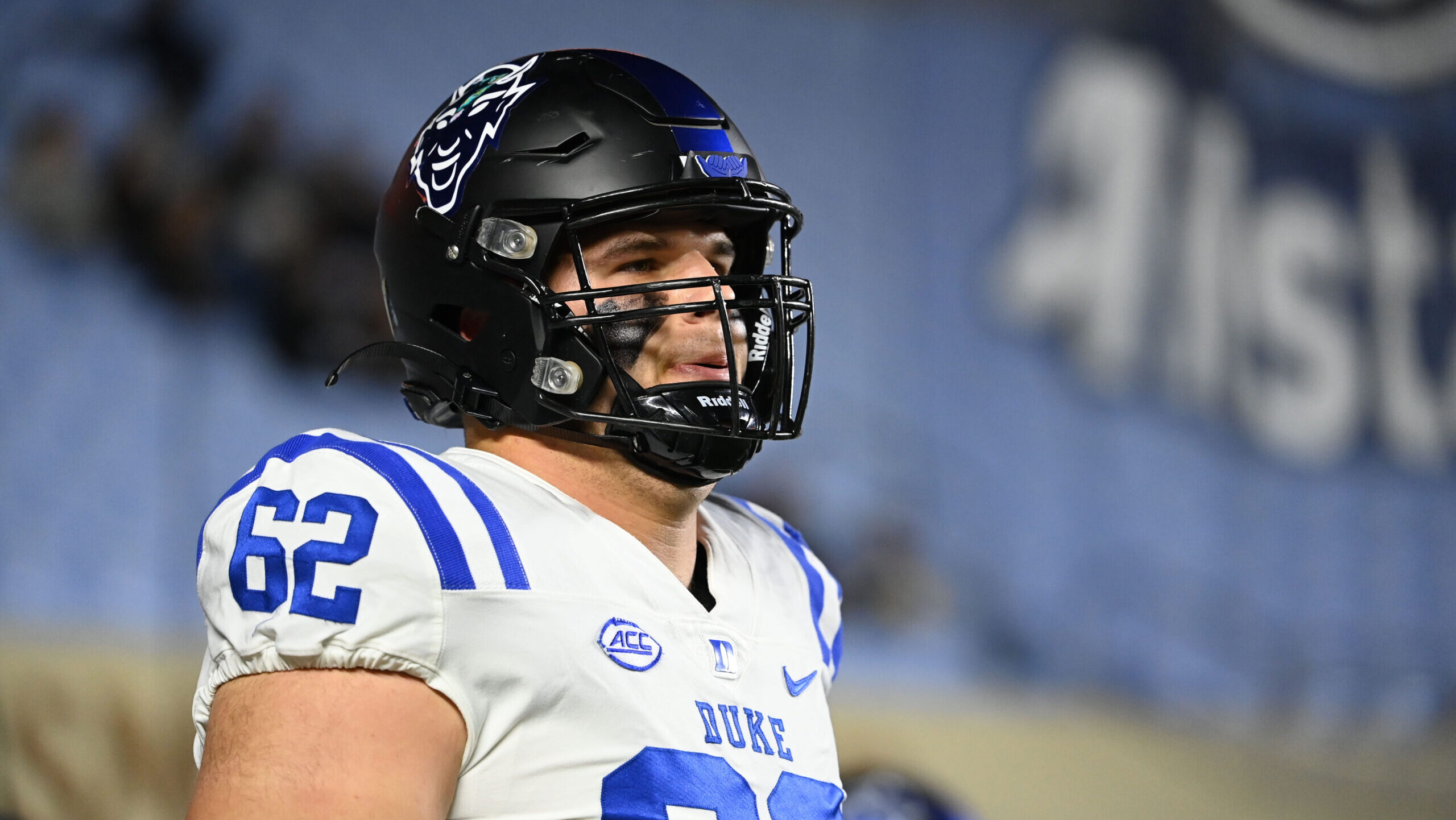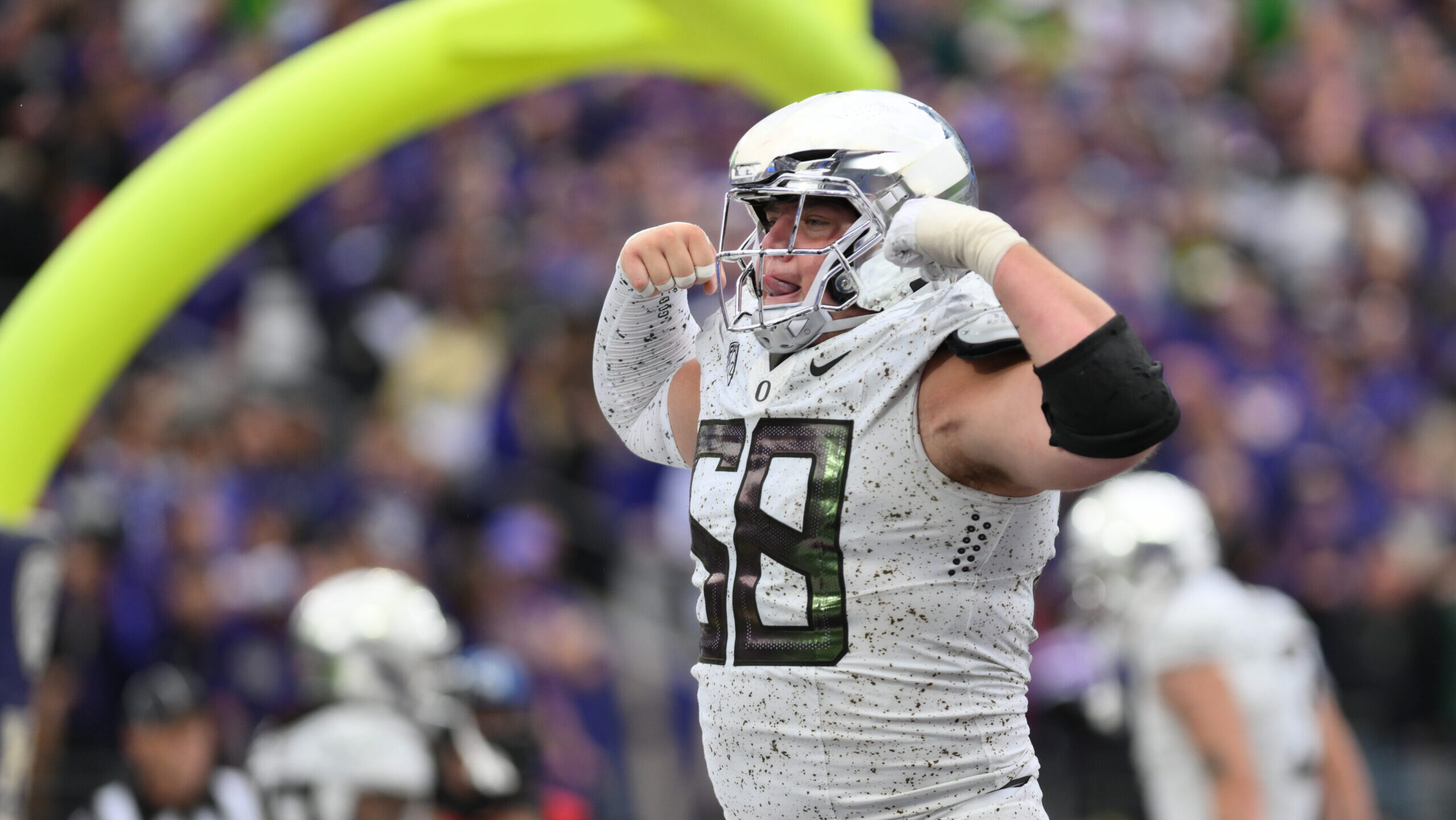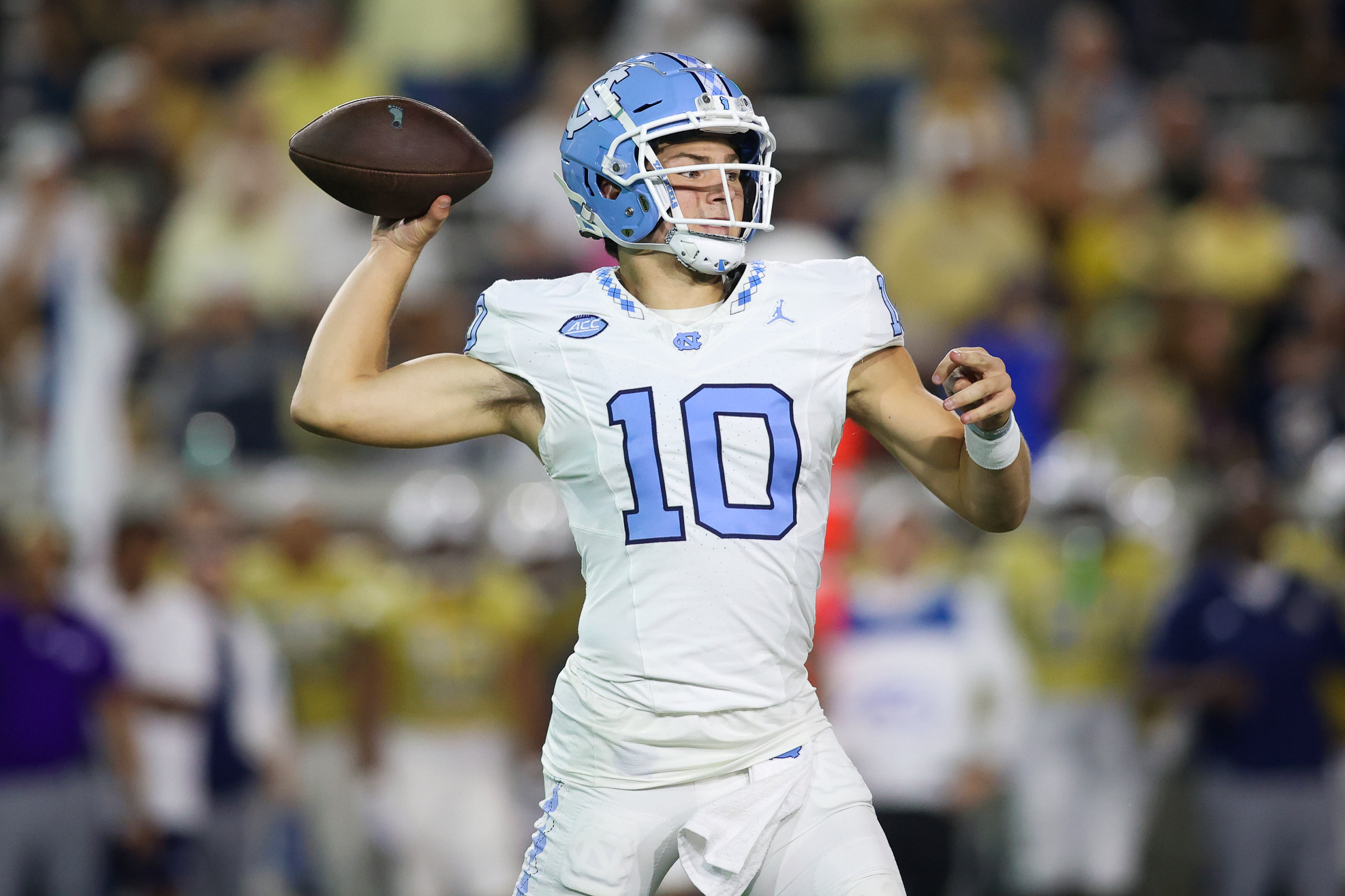Analysis
9/28/22
6 min read
Pre-Snap Read: Rodgers, Wentz a Striking Contrast in QB Play
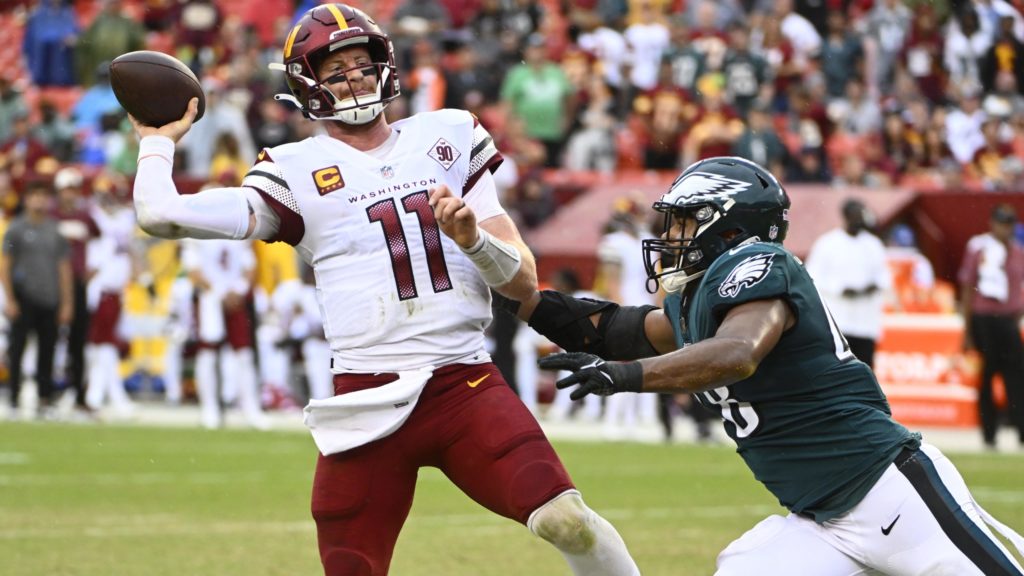
Every Monday, there are a handful of quarterbacks (and offensive coordinators) around the league who wake up dreading the film session that awaits. Carson Wentz was the captain of that team this week, and the pain that came with watching Sunday’s debacle against Philadelphia might have hurt more than the nine sacks he endured.
Overmatched is the kindest way to describe Washington’s offense, inept is more accurate and horrendous is not a stretch.
The Commanders’ first series was a harbinger. On first down, Wentz had a ball batted at the line of scrimmage, on second down he threw low for a harmless 5-yard completion, and on third down, he was sacked against a four-man rush.
The rest of the first half was a dizzying amount of the same. With no run game, the offensive line struggled in pass protection, and Wentz didn't help by holding the ball too long and misfiring on all kinds of throws.
The Commanders’ first dozen pass plays that called for Wentz to stay in the pocket resulted in one completion for five yards — and five sacks.
Think about that.
And this: At halftime, the Eagles had 24 points, and Carson Wentz had 24 passing yards.
The ways to point out how bad their offense was are numerous. But I’m more interested in making sense of the particular issues that made their offense so offensive – and how they can be fixed. Here’s what I found.
Failing Pass Protection
The offensive line's complete inability to handle routine four-man rushes and the occasional five-man rush is a good place to start. WOW! No offensive line should struggle against a pass rush that isn’t well-disguised and isn’t bringing more rushers than you have blockers. The Eagles routinely lined up in a four-man front, rushed those four and still got to Wentz. Often.
But, the pressure that affected Wentz isn’t all on the offensive line. He often failed in that crucial moment when NFL quarterbacks win or lose a dozen times each game. When they hit the top of their drop, the pocket is caving in and the pressure is almost home. There is literally a split second when one of three things happens:
1. The ball comes out and gets to the right place with accuracy.
2. The pressure leads to an errant throw.
3. There is hesitation and then a sack.
Time and time again, Wentz checked the hesitation and sack box.
I always look for visual comparisons to help me grasp the differences in QB play the previous weekend presented. One successful play I saw from Aaron Rodgers in the Packers-Buccaneers game juxtaposed how Washington and Wentz struggled with Philadelphia’s basic pass rush.
On a third-and-8 for Green Bay early in the second quarter, Tampa Bay’s defense lined up with seven possible rushers on the ball. There was no real way to decipher how many or which players would actually rush. At the snap, the three defenders aligned furthest to the left of Rodgers on the D-line all turned and sprinted back into pass coverage. The four to the right all rushed, as did a safety who was lined up a few yards off the ball.
A couple of seconds of chaos ensued, putting Rodgers in the crosshairs for that split second I mentioned above: Would he cave to the sack? Or immediately — and accurately — find a place to go with the ball?
He moved up to find the smallest of open areas in the collapsing pocket, spotted an outlet beneath the sticks and got his receiver the ball accurately, allowing him to run for a first down. A master class in handling an exotic blitz, and winning the moment when the QB either gets sacked or gets something accomplished.
With Rodger’s example in mind, consider Wentz’s reaction in his moments when the Eagles’ pass rush was an eyelash away. He blinked.
The moment came and went, and it ended with Wentz still holding the ball at the bottom of a pile. Six times in the first half and nine times overall.
Wentz is Struggling With Accuracy
His short-route accuracy also let him down. For Wentz, it’s not only a placement issue, it’s a velocity issue. Low and fast or high and hard are tough combos for backs, receivers and tight ends who aren’t that far from the quarterback. All they want is a catchable ball right on them or right in front of them. This is a fundamental concept since we increasingly see quarterbacks on third-and-medium and third-and-long throw short of the line to gain, with the hope that a catch and run, not just a catch, will move the chains.
Let’s go back to Rodgers’ early success against Tampa. He converted the first five third-down situations, winning on each one by throwing beneath the sticks. The combo of his decisiveness and his accuracy allowed his playmakers to get the ball early, catch it in stride and pick up the first down. His precision was off the charts. He was decisive with where to go with the ball and nearly perfect with his placement.
This theme was present and vital on both of the Buccaneers’ touchdown drives with Tom Brady — in a game decided by two points.
When I see Wentz throw I’m reminded of a shortstop who has gone to the hole, backhanded the ball and has to fire one across the diamond with real zip to get the runner by one step. His longer windup motion looks the part, and his velocity does as well. For intermediate and longer routes, it can be beautiful; for shorter ones, if he misses even a little, which Wentz often did on Sunday, the “and run” part of “catch and run” takes a major hit.
Is it unfair to compare Wentz in his first year with Washington to the reigning MVP in his fourth year with Matt LaFleur? Maybe. But placing an “A” example next to an “F” in a complex part of the game that can be the difference between points and punts — and ultimately wins and losses – also shines a light on what mattered most in the process, and why the results were so different.
